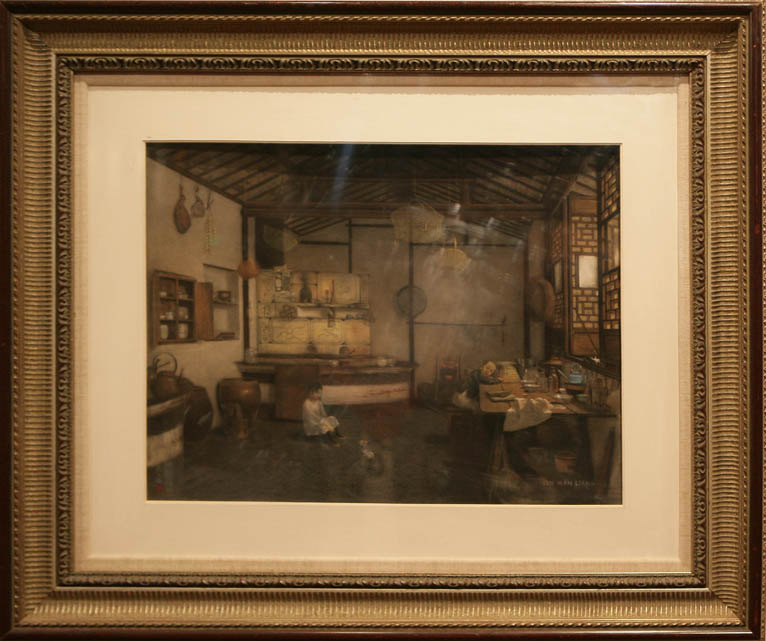YAN WENLIANG
| June 1, 2010 | Post In LEAP 3

Born in Suzhou, Yan Wenliang (1893-1988) was immersed in the southern city’s traditional culture, passed down through the generations, from an early age. In his childhood he learned Chinese flower-and-bird painting from his father, and later watercolors. Following the epochal changes of the early twentieth century—the advent of the ROC, the spread of Western influences, the start of the New Culture movement, the end of the civil-service exams and the rise of “new education”—Yan began to experiment with Western painting and even produced his own oil paint.
On display in this large show of Yan Wenliang’s work at Yanhuang Art Museum were paintings on loan from the National Art Museum of China, Shanghai Art Museum, Suzhou Art Museum and Yan Wenliang Memorial Museum. The show took “indigenization of oil painting” and “an educational philosophy placing equal emphasis on pure and practical art” as its two main themes in a systematic arrangement of Yan’s major works and accomplishments in art education. The works of Yan’s father, Yan Yuan, are also on display, along with related works by Hu Cui and Zhu Shijie, who along with Yan comprise the “Three Masters of Suzhou.”
In 1912, Yan Wenliang bid farewell to the Shanghai Commercial Press and returned to Suzhou to concentrate on the study of Western painting. This was a period of exploration in Yan’s work, resulting in the paintings Grandaunt, Father-in-Law and Kitchen. Kitchen (1920) is particularly successful in encapsulating Yan’s research and use of scientific painting principles such as perspective and color during this period. A panoramic depiction of an old-fashioned Jiangnan kitchen scene, its lifelike imagery and balanced colors reflect the artist’s grasp of painting principles such as perspective, light and shade. The significance of Kitchen lies in its expression of Yan’s historic choice at the junction of Chinese and Western culture; the sense of space he constructed with scrupulous methods, outstanding order and proper proportion gave Chinese painting a new lease on life.
In 1929 Yan Wenliang began his formal training at the École Nationale Supérieure des Beaux-Arts in Paris. In 1930 he showed a number of Impressionist inspired works he made during his travels through Italy, winning a prize at the Salon du Printemps for his efforts. From the meticulous depiction of light to the rich colors on the canvas, works of this period represent the peak of Yan’s artistic achievement.
The fifteen years between 1950 and 1965 were Yan Wenliang’s most prolific period in terms of both artwork and experimentation—a stable academic environment allowed him ample time to paint. By an incomplete count paintings of this period account for more than half of Yan’s extant body of work. More importantly, the oil paintings of this period reached a peak of “indigenization,” and a stable Yan Wenliang style became fully formed. Dawn of the Pujiang River (1953) is meticulous in its use of color, electric and bright, the rising sun gushing forth on the canvas and gradually dispelling the dark, dyeing the surface of the water a fiery red to illuminate the boats bustling on the Pujiang, the entire painting filled with the joyful optimism of the age. Yan’s later period began with his return to Shanghai in 1969, and produced works such as Ode of Our Country (1982), a seascape of billowing blue waves.
Yan Wenliang’s contributions extend well beyond the works on view in this comprehensive retrospective. He was an educator at heart, founding a modern painting competition and later a private art academy in his native Suzhou, and shipping back thousands of plaster casts from his European travels for the benefit of its students. Like many of the pioneering painters in his generation, Yan persisted in his realist artistic style while merging an Eastern cultural spirit into his works of Western oil painting. Ultimately, he played an important and early role in advancing the emerging practice of Chinese oil painting. Jia Mingyu

